The Two Lives of Napoleon Bonaparte: Photoshopped History
A GOOD example of this is the Back to the Future trilogy, and who hasn’t seen that? Pick any movie in the series. They tell you how the deception is done. You can dial forwards or backwards in the narrative, say thirty—or if we’re especially loaded with gigawatts, seventy to a hundred years—and history repeats itself.
Biff Tannen drives his 1946 Ford Super DeLuxe convertible into a pile of manure in 1955, thanks in part to Marty McFly’s prodigious skateboarding skills. In 2015, precisely sixty years later, old Tannen watches McFly send Tannen’s grandson Griff through a pane of glass at the Hill Valley courthouse. Maniac hoverboard skills. After a quick stopover in 1985, and seeing to it that middle-aged Tannen’s face is smashed in with the door of Doc Brown’s flying Delorean, McFly then returns to 1955, where teenager Tannen drives his convertible into yet another pile of manure. More wicked hoverboard skills. We shan’t overlook McFly’s final trip to 1885, where McFly’s great grandfather Seamus watches Tannen’s great-grandfather, Buford “Mad Dog” Tannen, tumble with a wide open mouth into another cart of manure. This—after having his face smashed in with McFly’s cast iron bullet proof vest. I would furthermore do you a disservice to neglect the fact that only Griff and Buford are arrested by the Hill Valley police, whereas Biff Tannen, in one version of the narrative, owns the Hill Valley police.
By the time Tannen’s great-grandfather groans, “I hate manure,” we’re all in on the joke.
Whether we’re dealing with Buford and Griff, young, middle-aged, or old Biff, they’re all played by the same actor. Thomas F. Wilson has been there, done that. He’s the person seemingly speaking through the fourth wall and telling us of his hatred for manure.
Also, it’s all a script.
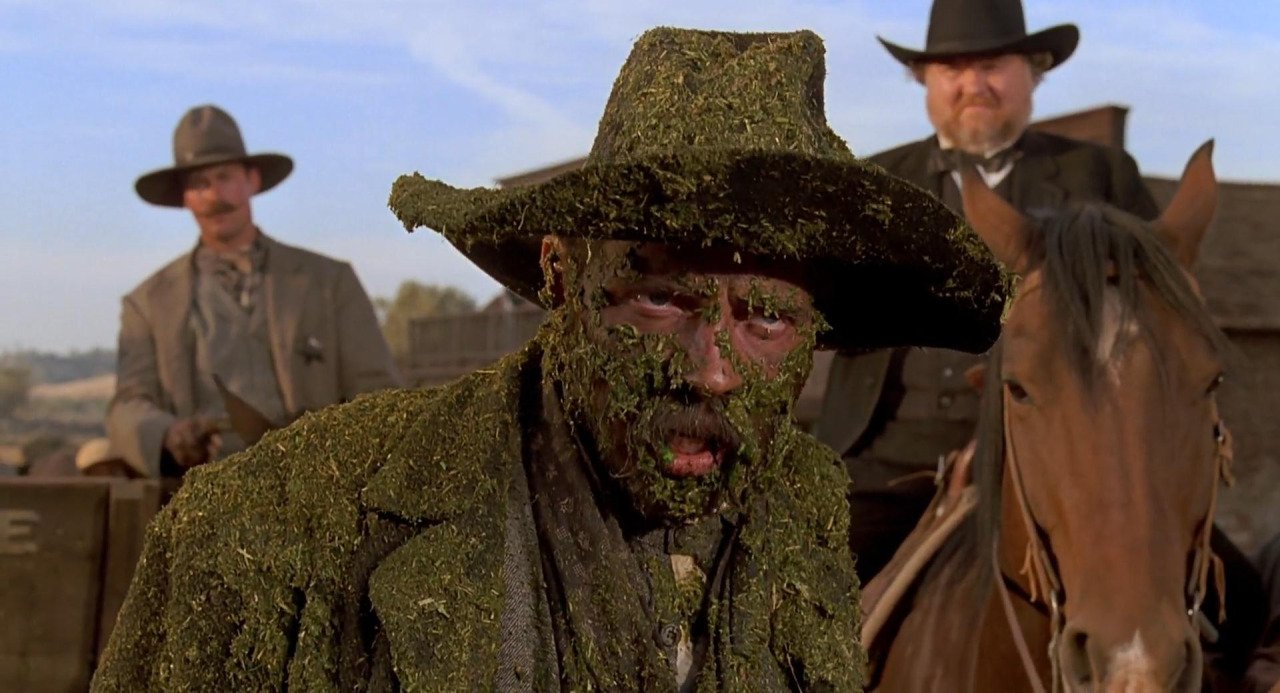
You’re probably already confused.
This is likely due to the fact that we took a refrigerator and bathroom break while discussing Russian theorist Anatoly Fomenko, and are promptly picking up from where we last left off—a conversation which you were apparently not a part of. Whenever I engage people with the nature of deception, also the trick of the trade, kind of like Thomas F. Wilson playing three different relatives over thirteen decades, I never really know where to begin. Do I take you all the way back to the garden and break down the lie of the serpent or have you already contended with the fact that Christianity is a pagan religion saturated with Plato and the Mystery schools? Also, the world is a stage and 9/11 was a demolition.
If you are not content being a fly on the wall, then I suggest you visit my last two papers, The Lost Wars of Yahuah: Missing Books, Forbidden His Story, and The Anatomy of Anatoly Fomenko, which you can read here, Missing Books, and here, Anatoly Fomenko. Because today we will be taking Fomenko’s research and running with it.
Here we go.
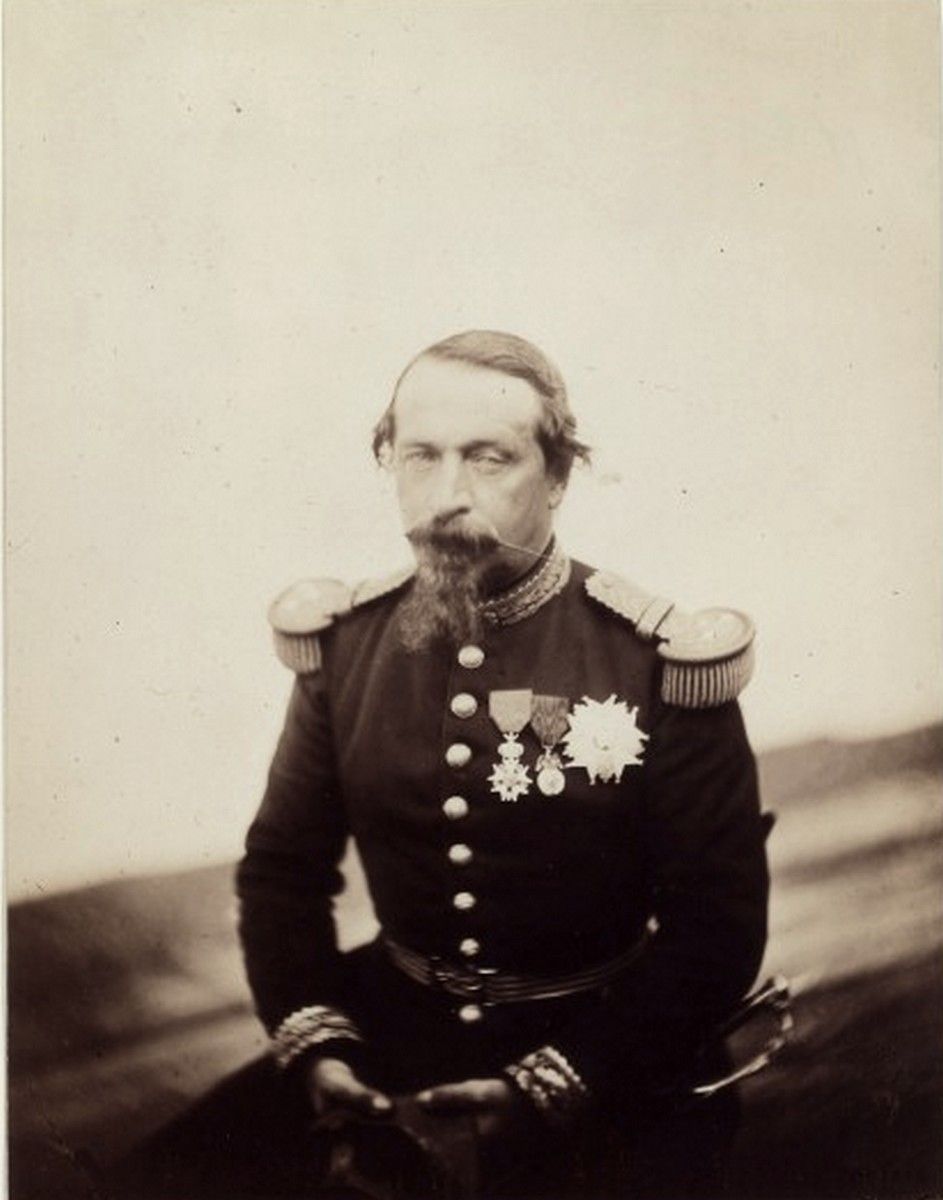
I can only assume we all know what Napoleon Bonaparte looks like. The dwarf king. There are various statues and paintings depicting the little ego of a man, but none in photographs. World leaders would not begin to have themselves photographed for another twenty years. I therefore thought it would be a good idea to introduce you to his nephew, Louise Napoleon, also known as Napoleon III, because the rest of this conversation, before the next refrigerator and bathroom break, will piggy-back off the lives and world events surrounding these two men. Or are they the same? Biff Tannen. Griff Tannen. Buford Tannen. Napoleon. Napoleon. You tell me. Their stories are so similar that one begins to wonder if one is simply copied from the other.
Let’s put it this way. If history could be told to us using computer software and you wanted to make people believe a scarcely pixelated image was several times larger and far more detailed than it really was, you’d have little choice but to slap it onto a blank canvas and then copy and paste. Copy and paste. Copy and paste.
There might be any number of reasons for committing the deed. Perhaps our Slave Masters wanted to scrub true history in order to falsely legitimize a bastard lineage of kings. Or perhaps they wanted to throw off any notion of real time, padding hundreds of additional fictional years so that we haven’t the faintest clue what hour we’re ultimately living in. You probably know my theory. This is the season of deception we find ourselves in. Revelation 20. Satan has been loosed from prison, and among his many images which he hopes to mirror, the shape of the earth and the shape of history are just two of them. People were going around in togas, girdling their loins, riding upon the backs of horses and donkeys, and then suddenly we’ve got planes and rocket ships and quantum computing. But you know this already. I hate to break the news, but prophecy already happened. You can read more about that here, Watchers Released, and here, Yahusha Returned. I’ve come to these conclusion for a number of reasons, but mainly because we live in a Matrix of their design and everything they tell us is a lie.
Essentially, if you wanted to create something which never existed to begin with, you’d Photoshop history.
The Napoleonic Wars were a series of major conflicts pitting the French Empire and her allies, led by Napoleon I, against a fluctuating array of European powers and coalitions, all of whom were financed and led by the United Kingdom. This is according to the official narrative, mind you. In a future paper (or papers) I hope to take a closer look at what was really going on in Europe, but also the War of 1812 in America and the American Civil War, because I am convinced all theaters of conflict relied heavily upon the other. The purpose, you ask? To destroy any remembrance of the Old World Order and the great Tartarian Empire.
Really, the copy and paste work goes on and on and on and on. It would be so incredibly time consuming to dig into the history books and recover them all. Therefore, I will present to you and compare a potential 21 Photoshop events in world history, all of which somehow revolve around the two men, Napoleon Bonaparte and Napoleon III.
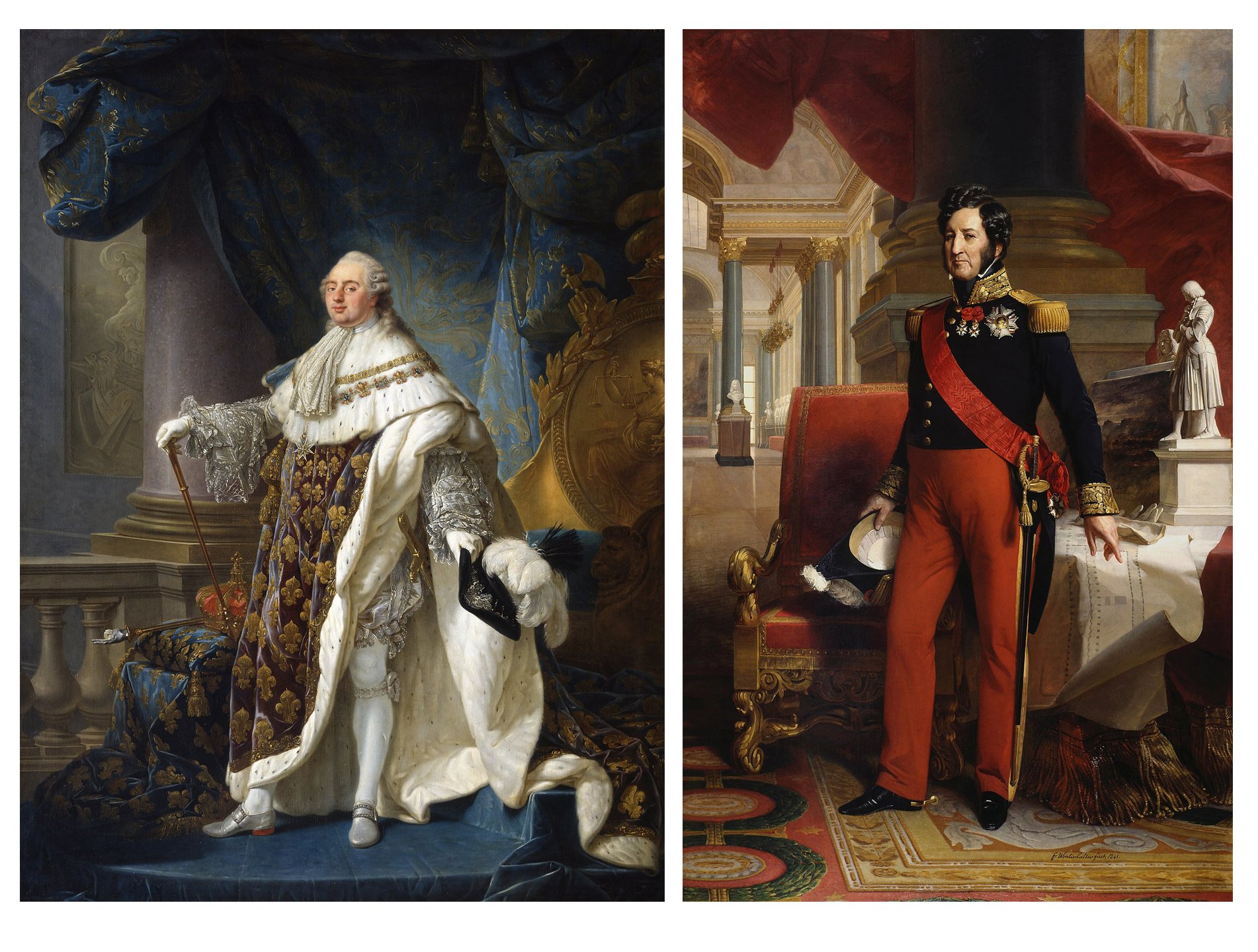
King Louis XVI and King Louis Philippe I
PHOTOSHOP #1.
- King Louis XVI ruled for 18 years, from 1774-1792, and was overthrown by the French Revolution. This paved the way for Napoleon Bonaparte’s rise to power.
- King Louis Philippe I ruled for 18 years, from 1830-1848, and was overthrown by the French Revolution. This paved the way for Napoleon III rise to power.
PHOTOSHOP #2.
- The year was 1794. Napoleon Bonaparte would not become Emperor for another 10 years. On August 9, he was arrested in Nice, France.
- 1840. 12 years before he became Emperor, Napoleon III was arrested in Boulogne, France, after a failed attempt to lead an uprising against Louis-Philippe. He was sentenced to life in prison in the fortress of Ham in Northern France.
PHOTOSHOP #3.
- 1798. The Roman Republic was declared in February of that year after Louis Alexandre Berthier, a general of Napoleon Bonaparte, invaded the city of Rome. Napoleon Bonaparte would not rise to power, seizing political power in France in a coup d’état, for another year.
- 1849. One year after Napoleon III rise to power, the Roman Republic was declared, again in February, after Charles Oudinot, a general of Napoleon III, invaded the city of Rome.
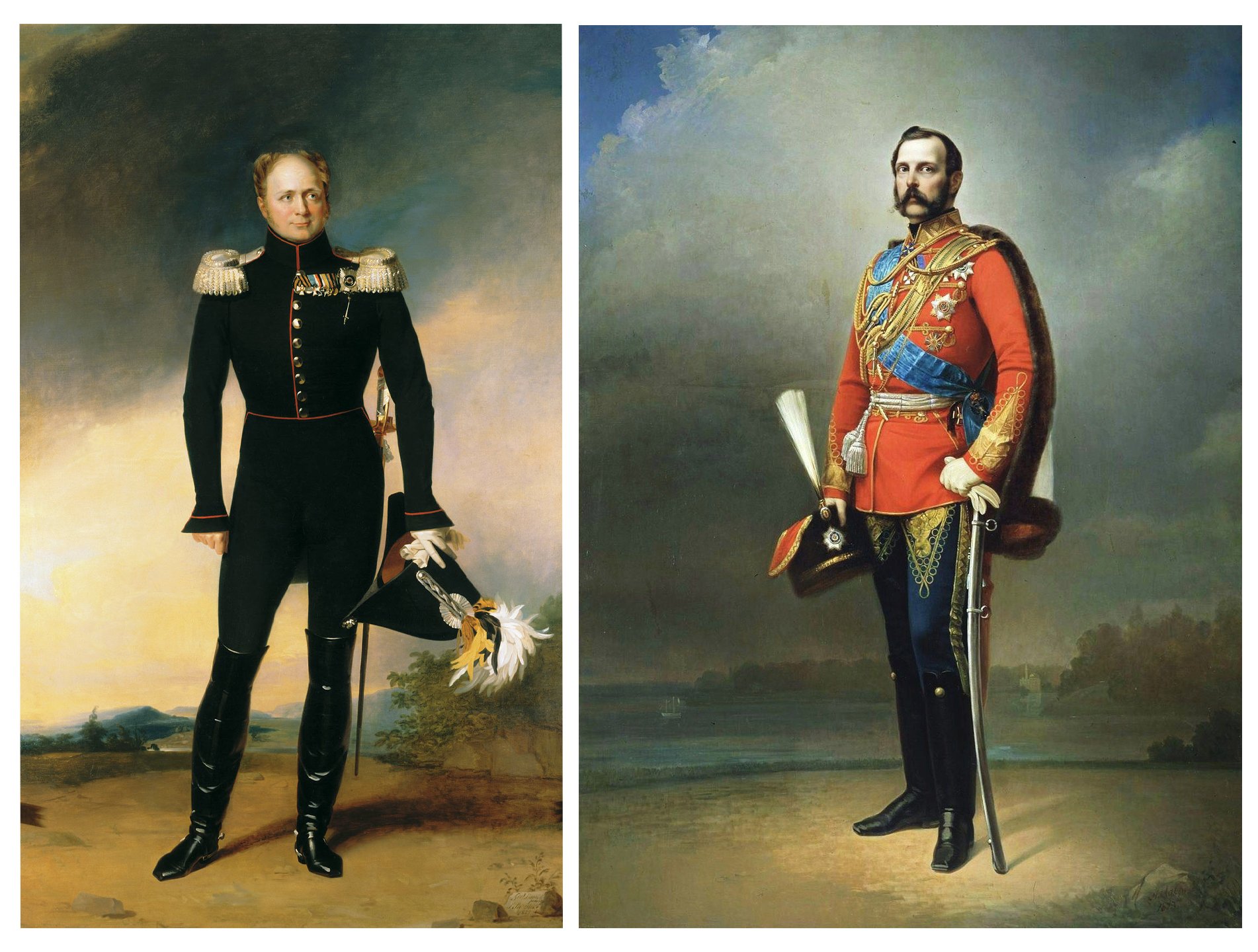
Tsar Alexander I and II
PHOTOSHOP #4.
- Bonaparte waged a war against Russia and Tsar Alexander I. His brother Grand Duke Konstantin Pavlovich later became the Governor of Poland.
- Napoleon III waged a war against Russia and Tsar Alexander II. His brother Grand Duke Konstantin Nikolayevich later became the Governor of Poland.
PHOTOSHOP #5.
- In 1805, Austria and Russia formed the Third Coalition and waged war against France. In response, Napoleon defeated the allied Russo-Austrian army. With Austria defeated, the Confederation of the Rhine was founded in Germany, which enabled the French to unify and dominate the country until Napoleon’s downfall.
- Between 1866 and 1867, and while Napoleon III was still in power, the Austrians were defeated. Both the Austro-Hungarian Empire and the North German Confederation in Germany was founded.
PHOTOSHOP #6.
- The Kingdom of Italy was born on March 17, 1805 when Napoleon Bonaparte, 10 years before his fall, became its president.
- In 1861, a Kingdom of Italy was formed, 9 years before the fall of Napoleon III. Victor Emmanuel II became King of Italy.
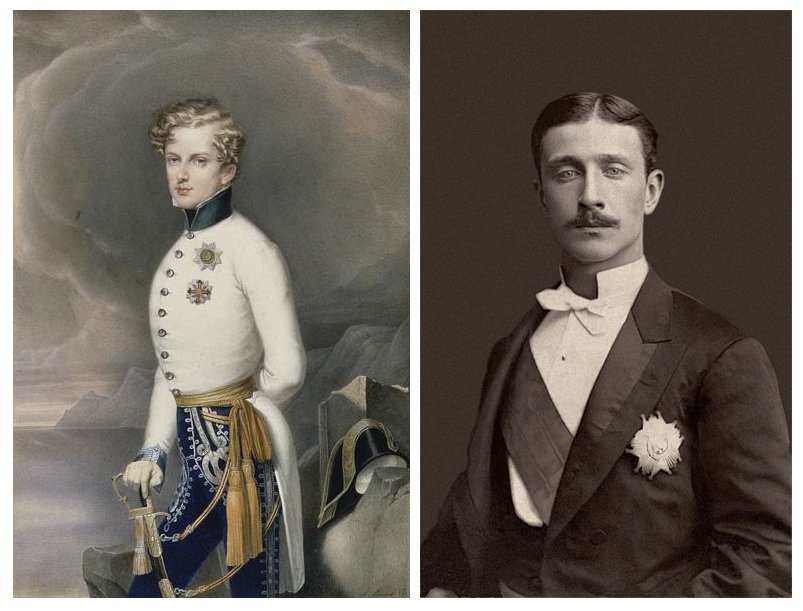
Napoleon II and IV
PHOTOSHOP #7.
- Napoleon Bonaparte had only one legitimate child—a boy. Napoleon François Joseph Charles Bonaparte, or Napoleon II as he was known, was never able to rule. The prince Imperial king of Rome died on July 22, 1832, at the age of 21.
- Napoleon III had only one legitimate child—a boy. Napoleon Eugène Louis Jean Joseph Bonaparte, or Napoleon IV as he was known, was never able to rule. The prince Imperial died on June 1, 1879, at the age of 23.
PHOTOSHOP #8.
- The Charter of 1815, signed on April 22 of that year, was the French constitution prepared by Benjamin Constant at the request of Napoleon I when he returned from exile on Elba. It was the same year that he was finally defeated.
- The Senatus-Consultum of 1870, signed on on May 21 of that year, was the Constitution of the French Empire prepared with the help of the Minister Ollivier by Napoleon III, a modification of the constitution of January 14, 1852. It was the same year that he was finally defeated.
PHOTOSHOP #9.
- The Holy Alliance was a coalition linking the monarchist great powers of Austria, Prussia, and Russia. It was created after the final defeat of Napoleon Bonaparte at the behest of Emperor Alexander I of Russia and signed in Paris on 26 September 1815.
- The League of the Three Emperors was an alliance between the German, Russian and Austro-Hungarian Empires, from 1873 to 1880, after the defeat of Napoleon III.
PHOTOSHOP #10.
- The Decembrist revolt took place in Imperial Russia on December 26, 1825, after the death of Tsar Alexander I of Russia. Russian army officers led about 3,000 soldiers in a protest against Nicholas I’s assumption of the throne after his elder brother Constantine removed himself from the line of succession. It resulted in the trial of 289 Decembrists, the execution of 5, and the imprisonment of 31.
- Alexander II was assassinated on March 13, 1881. Encouraged by their success, the Narodnaya Volya movement began planning the assassination of Alexander III. Their plot was uncovered and five of the conspirators, including Alexander Ulyanov, the older brother of Vladimir Lenin, were captured and hanged on May 8, 1887.

Lenin and Marx
PHOTOSHOP #11.
- 1818. 3 years before the death of Napoleon Bonaparte, Karl Marx was born.
- 1870. 3 years before the death Napoleon III, Vladimir Lenin was born.
PHOTOSHOP #12.
- 1826. 16 years after the defeat of Napoleon Bonaparte, Pedro I briefly became king of Portugal before abdicating in favor of his eldest daughter, Dona Maria II in 1831.
- 1889. 18 years after the defeat of Napoleon III, Pedro II of Brazil was suddenly removed from his throne. Though highly loved by his people, he spent the final years of his life in exile in Europe, living alone on very little money.
PHOTOSHOP #13.
- 21 years before the fall of Napoleon Bonaparte, the Kościuszko Uprising was an uprising against the Russian Empire and the Kingdom of Prussia led by Tadeusz Kościuszko in the Polish–Lithuanian Commonwealth and the Prussian partition. The year was 1794.
- 21 years before the fall of Napoleon III, news of a revolution in Paris encouraged the Pest Uprising fror the partition of Hungary from the Austro-Hungarian Empire, which became one of the cornerstones of the Hungarian national identity. The year was 1848.
PHOTOSHOP #14.
- 1839. 18 years after the death of Napoleon Bonaparte, Milos Obrenovic of Serbia abdicated in favor of his sons; first Milan, who died a few weeks later, and then Mihailo, who became prince until he was disposed of in 1842.
- 1889. 16 years after the death of Napoleon III, Milan Obrenovic of Serbia adopted a new constitution. Two months later, on March 6, 34-year-old Milan suddenly abdicated the throne, handing it over to his then 12 year-old son.
PHOTOSHOP #15.
- February 7, 1855. 33 years after the death of Napoleon Bonaparte, the Treaty of Shimoda became the first treaty between the Russian Empire and the Empire of Japan, then under the administration of the Tokugawa shogunate, and which affirmed borders and trade between the two countries.
- February 1905. 32 years after the death of Napoleon III, Russia and Japan sign the Treaty of Portsmouth, which formally ended the 1904–1905 Russo-Japanese War, which affirmed Japanese borders and trade routes between the two countries.
PHOTOSHOP #16.
- 66 years after Napoleon Bonaparte became Emperor, France was finally defeated by Germany in the Franco-Prussian War of 1870, which resulted in the capture of Napoleon III in September 1870, the collapse of the Second French Empire, and the beginning of the Third Republic. Paris was under siege for 4 months, lasting from September 19, 1870 until January 28, 1871. The resulting Paris Commune quickly became a radical socialist and revolutionary government that ruled Paris from March 18 through May 28, 1871. Over 20 Communards were executed.
- 66 years after Napoleon III became Emperor of France, Germany was defeated by France in the First World War in 1918. The Russian Empire fell to the Bolsheviks. Ottoman forces opposed the Red Army and Baku was under siege for 2 months, April 13 to July 25, 1918, in what is called the Baku Commune. Over 20 Commissars were executed.
PHOTOSHOP #17.
- 1789-1790. 23 years before Napoleon Bonaparte led the 1812 French invasion of Russia, the Brabant Revolution was an armed insurrection that occurred in the Austrian Netherlands, and led to the establishment of the United Belgian States.
- 1830-1831. 23 years before Napoleon III advanced the 1853 Crimean War against Russia, the Belgian Revolution led to the secession of the southern provinces from the United Kingdom of the Netherlands and the establishment of an independent Kingdom of Belgium.
PHOTOSHOP #18.
- The Russo-Persian War ended in 1813, one year after Napoleon Bonaparte invaded Russia.
- The Anglo-Persian War ended in 1857, one year after Napoleon engaged the Russians in the 1853-1856 Crimean War.
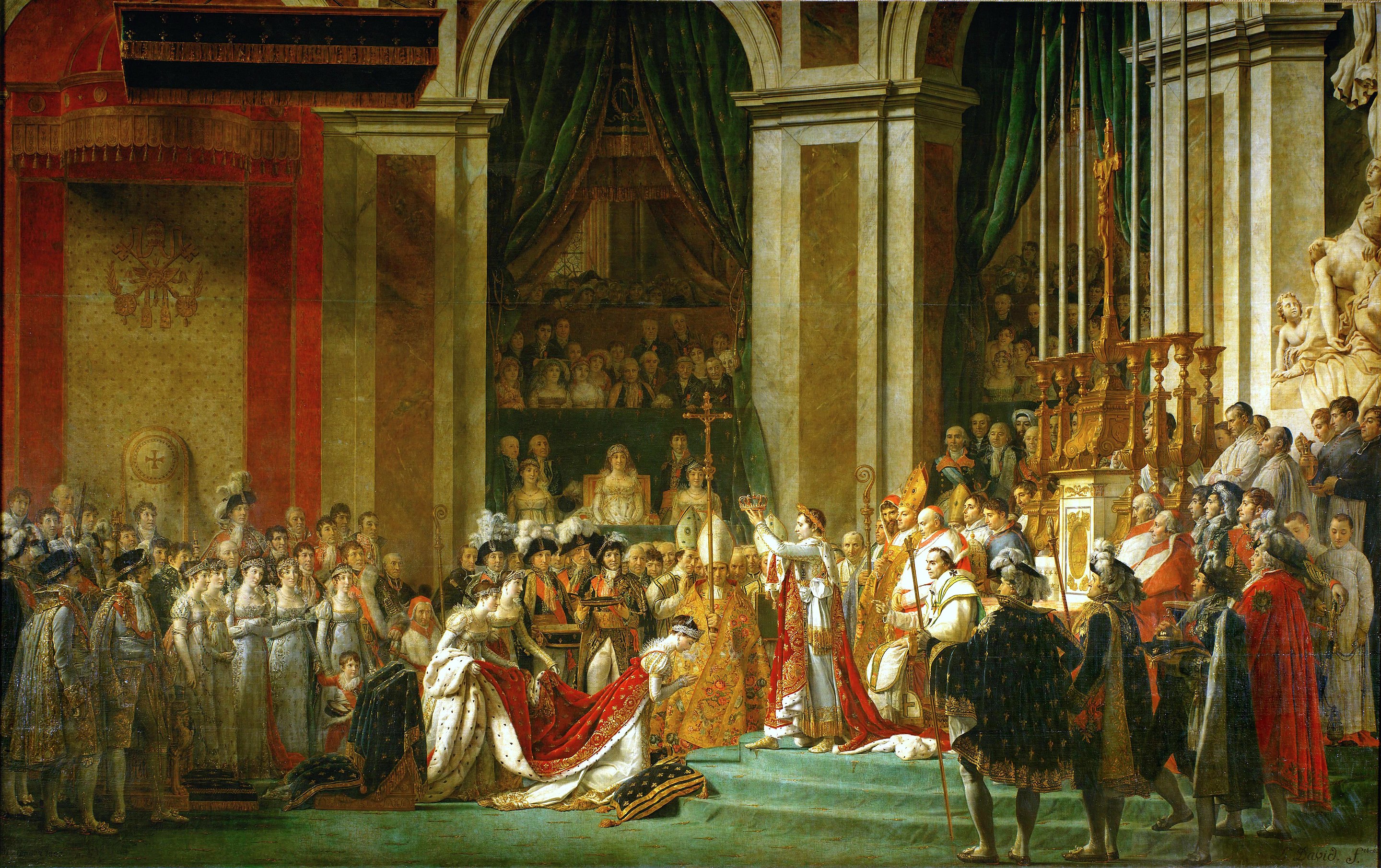
PHOTOSHOP #19.
- After seizing political power in France in a 1799 coup d’état, Napoleon Bonaparte became the ruler of the French Republic and 4 years later, on Sunday, December 2, 1804, his coronation made him the Emperor.
- December 10, 1848. Napoleon III won the election for the French presidency. 4 years later, on December 2, 1852, Louis-Napoleon Bonaparte became Emperor Napoleon III. The Republic was changed to the second French Empire.
PHOTOSHOP #20.
- Napoleon Bonaparte’s rise to power in 1799 witnessed the Irish Rebellion of 1798, an uprising against British rule in Ireland. The United Irishmen, a republican revolutionary group influenced by the ideas of the American and French revolutions, were suppressed by England.
- Napoleon III rise to power in 1848 witnessed the Young Irelander Rebellion, another Irish nationalist uprising which failed when confronting England.
PHOTOSHOP #21.
- The Russo-American Treaty of 1824 was signed in St. Petersburg between representatives of Russia and the United States, 12 years after Napoleon Bonaparte invaded Russia in 1812. The Treaty outlined Russia’s boundaries.
- The Alaska Purchase in 1867 was the United States’ acquisition of Alaska from the Russian Empire, 11 years after Napoleon III war with Russia in 1856.
Noel
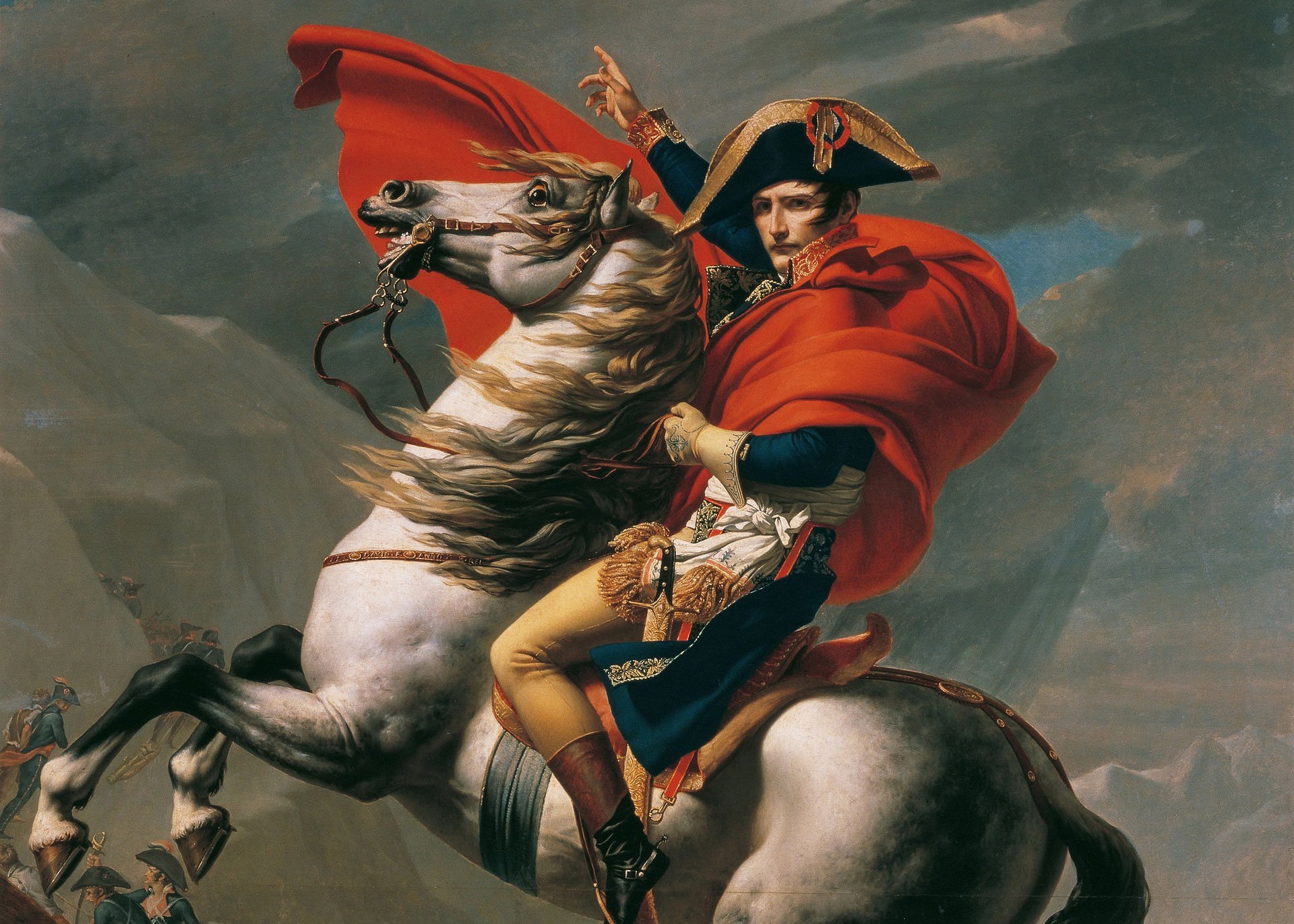
Sources
David Ewing Jr, “Tartaria: History Is a Lie”
Wikipedia, Wikipedia, Wikipedia, and Wikipedia.